First Drive: 2013 Hyundai Santa Fe XL
Story and photos by John LeBlanc
SAN DIEGO, Calif. – Hyundai fans have spoken. Well, Hyundai Santa Fe fans, anyway. When the time came for the Korean automaker to design a new three-row crossover for 2013, the lesser-known Veracruz nameplate was dropped in favour of literally expanding the Santa Fe family with the introduction of the extended XL model.
Naming its new three-row crossover “Santa Fe XL” makes a lot of marketing sense. The seven-passenger Veracruz was Hyundai’s top-ranked vehicle when it came to satisfied customers, but those buyers were few and far between compared to the more popular five-passenger Santa Fe (now known as the Santa Fe Sport). According to Michael Ricciuto, Hyundai Canada’s national manager for product and strategic planning, there simply isn’t enough profit in increasing the awareness of the Veracruz nameplate on its own; instead, Hyundai decided to leverage the more than 200,000 existing Santa Fe customers in Canada with the new XL version.
Compared to the two-row Santa Fe Sport, the three-row XL has a longer wheelbase, more room and seats inside, a V6 instead the Sport’s pair of four-cylinder engines and considerably more towing capacity; however, the three-row, mid-size crossover segment is one of the hottest in the industry (mainly at the expense of minivans). Every mainstream brand offers competition. So while the new XL is the Santa Fe to get if you want more Santa Fe, how does the biggest Hyundai crossover you can buy stack up to its established rivals?
As we expect of any new Hyundai, the Santa Fe XL will be competitively priced. Hyundai admits the $29,999 front-wheel-drive base model XL ($3,500 more than a base Sport) is there more for price point purposes and former Santa Fe owners looking to a replace a minivan. Still, all XLs come well equipped, with heated front seats, power windows, six-speaker audio system with Bluetooth, tilt and telescoping steering wheel with audio controls, and cruise control as standard kit.
The remaining 90 per cent of Santa Fe XL buyers will opt for the perceived safety advantages of traction at all four wheels, which starts with the $34,999 XL Premium. There’s a top-line XL Limited starting at $42,899 (loaded with one-inch-larger 19-inch wheels, navigation with a larger central dash display and a 550-watt sound system), but Hyundai says the volume seller will be the $39,199 XL Luxury. It adds leather seating and one of those fashionably large sun/moon roofs, yet is thousands less than comparably equipped rivals such as the Ford Explorer, Honda Pilot, Mazda CX-9, Nissan Pathfinder and Toyota Highlander.
Hyundai’s research says “exterior styling” ranks higher as a priority with potential Santa Fe XL buyers compared to the smaller Sport, so even with a 100-mm-longer wheelbase (resulting in a 215 mm gain in overall length), Hyundai’s designers have worked hard to retain the smaller crossover’s robust looks on what is obviously a bigger package. And while the first two generations of Santa Fes were sold primarily on low pricing, the new 2013 models deliver higher levels of fit and finish on the inside. The XL simply adds onto that winning formula, but with more room.
Note to hoarders: no mid-size crossover offers the room of a typical minivan. Over the Santa Fe Sport, though, the XL adds 1,093 litres of passenger room (now 4,151 L) and 240 L more maximum cargo space when the second- and third-row seats are folded flat (now 2,365 L). Hyundai says that’s more interior room than a Highlander or CX-9, but less than a Pilot, Pathfinder or Explorer.
Except for the Santa Fe XL Limited (which comes exclusively with a pair of captain’s chairs in its second-row to make it a six-seater) all models offer 2+3+2 seating. Pre-teen children will be fine back in the 50:50-split folding third row thrones — and yielding adults. But the boxier 2+3+3-seat Pilot offers more space for those relegated to the back. At least Hyundai gives its rear-passengers HVAC controls, storage nooks and cupholders.
With 50 mm more legroom than the Santa Fe Sport, second-row occupants benefit most from the XL’s stretched wheelbase. The 40/20/40 three-passenger bench cleverly splits, folds and reclines. Dropping the middle seat is particularly convenient for carrying two middle-row passengers and longer items like skis or hockey sticks but your kids will find it more convenient to scoot between the XL Limited’s captain’s chairs than to fold forward the second-row seats in the seven-seat versions.
Customers in this segment aren’t overly concerned with straight-line performance or sports car handling. They simply want to get where they need to go with the least amount of fuss and hassle. In that regard, Hyundai’s decision to power the Santa Fe XL with a six-cylinder — instead of one of the fours found in the Sport — is a wise one. The 3.3-litre V6’s 290 horsepower is only 26 more than the Sport’s optional turbocharged 2.0-litre four. In fact, the direct injected 3.3’s 252 lb.-ft. of torque are 17 lb.-ft. shy of the 2.0 T’s number, yet the six-cylinder’s nearly flat torque curve, combined with the six-speed automatic transmission with which all Santa Fes are equipped, delivers smooth, responsive and stress-free performance.
Another reason to opt for the Santa Fe XL over the Sport is if you need to haul. All XLs come with a towing package that can handle up to 2,268 kg (5,000 lb). That’s 768 kg more than a Santa Fe Sport and the most ever in a Hyundai.
Light weight was also a priority with the Santa Fe XL’s designers. Despite the extra seats, room, power and towing capacity, long-wheelbase Santa Fe offers relatively good fuel economy compared to the turbo-four short-wheelbase Sport, with 11.6 L/100 km city and 7.8 highway ratings for the FWD models, and 11.7 and 8.0, respectively, for the Santa Fe XL with AWD. Outside a Hyundai showroom, only a Pathfinder (10.8 L/100 km city; 7.9 highway) sips less fuel.
With prices topping out at more than $40k, Hyundai sees its Santa Fe XL as a “premium” vehicle. As such, the Hyundai crossover drives more like a luxury sedan than a go-kart. But to show how much confidence Hyundai has in the Santa Fe XL’s road manners, our driving route was primarily on twisty back roads, just east of San Diego, California. (In contrast, during a Ford Explorer drive event in this same region a few years back, Ford had us stick to flat suburban roads and Interstate highways.)
Whether I’m describing the Hyundai’s engine, transmission, ride or handling, “smooth” and “composed” are the two adjectives that keep popping into my frontal cortex. Only race driver-wannabe auto writers will ever drive the Santa Fe XL as quickly as we did on roads better suited for something like a Genesis Coupe. But the big Hyundai crossover never felt overwhelmed. Its suspension is particularly compliant over large dips. You can tailor the Hyundai’s electronic-steering three ways: Comfort, Normal and Sport. In the latter setting, the Santa Fe XL steers around turns with supreme accuracy, if without a lot of feel.
Overall, a CX-9 feels tighter and more responsive when driven with verve than the Santa Fe XL, but can’t match how quiet and refined the Hyundai feels when you’re not driving like you stole it. I’ll chalk it up to its longer wheelbase, as the XL delivers a much smoother ride than the shorter Sport. And this vehicle is coffin-quiet at speed, with the only noise intruding into the cabin a faint whistle from the large exterior rear-view mirrors. How quiet? At one point, driving at a speeding ticket-inducing pace, I noticed I could hear my co-driver’s fingers squishing as he gripped and un-gripped the XL Limited’s leather steering wheel.
As a logical step-up from the Santa Fe Sport, and a replacement for the outgoing Veracruz, the new long-wheelbase XL has few faults. If you’re already interested in a Santa Fe but need more cargo room, seats or towing capacity, the XL makes a lot of sense. And even when put it against more-established three-row competition, the Hyundai is near the top in its class in most cases. It certainly is in regards to its luxurious driving demeanour.
In fact, if not too badge-conscious, buyers looking at luxury crossovers like the Acura RDX or Infiniti JX should give the topline Santa Fe XL models a try — yes, they’re that good.
First Drive: 2013 Hyundai Santa Fe XL
WHAT I LIKED: V6 adds performance with excellent fuel economy; quiet and composed driving dynamics; class-leading towing
WHAT I DIDN’T: Rivals offer more third-row room; limited availability of six-seat option; driving enthusiasts will prefer the Mazda CX-9
Price range: $29,900 –$43,199
Type of vehicle: FWD or AWD, midsize crossover
Engine: 3.3-litre, 24-valve, DOHC V6
Power/Torque: 290 hp / 252 lb.-ft.
Transmissions: Six-speed automatic
Fuel consumption (city/highway): FWD: 11.6/7.8 L/100 km; AWD: 11.7/8.0 L/100 km
Competition: Chevrolet Traverse, Buick Enclave, Dodge Durango, Ford Explorer, GMC Acadia, Honda Pilot, Infiniti JX35, Kia Sorento, Mazda CX-9, Nissan Pathfinder, Toyota Highlander





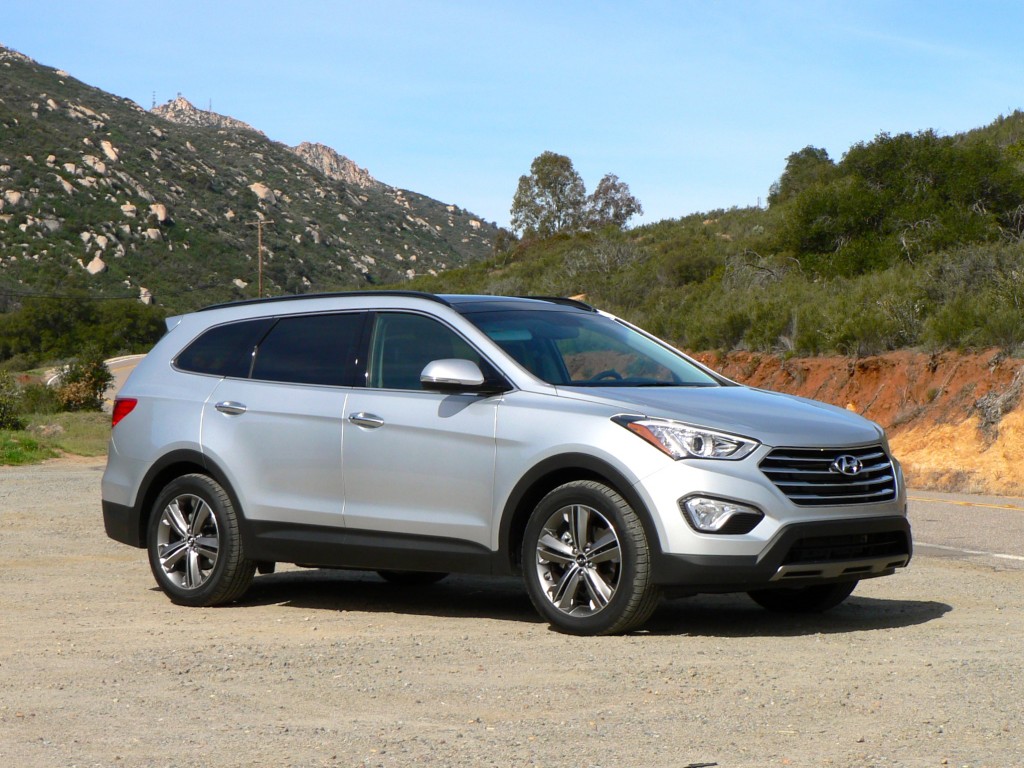
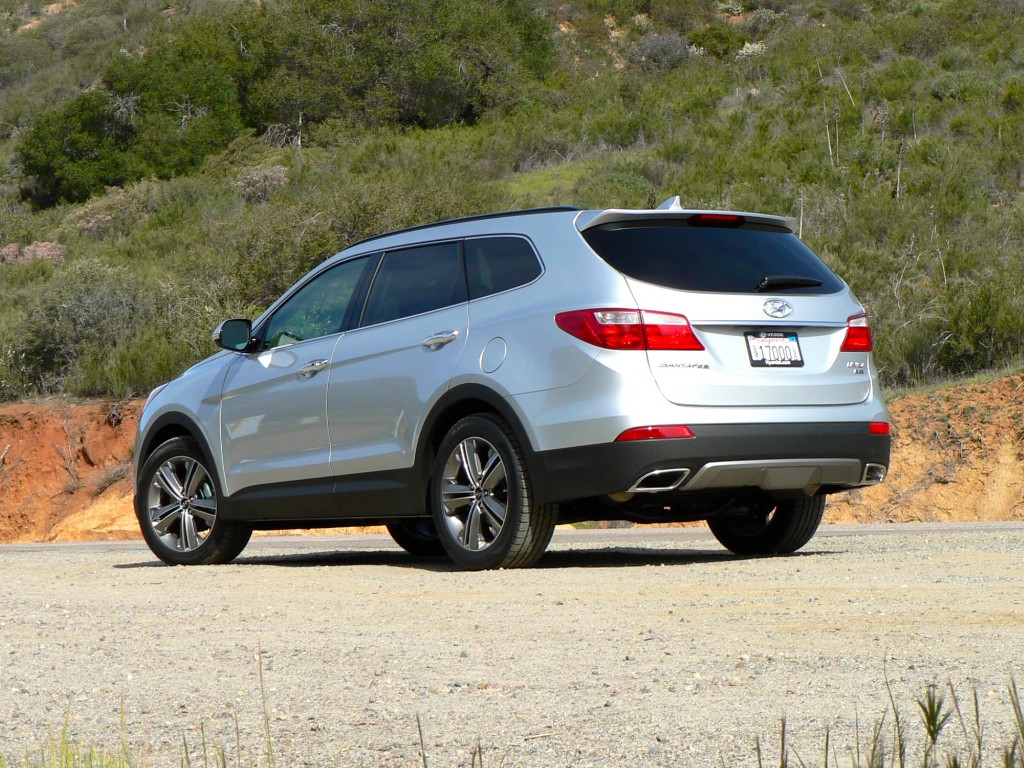
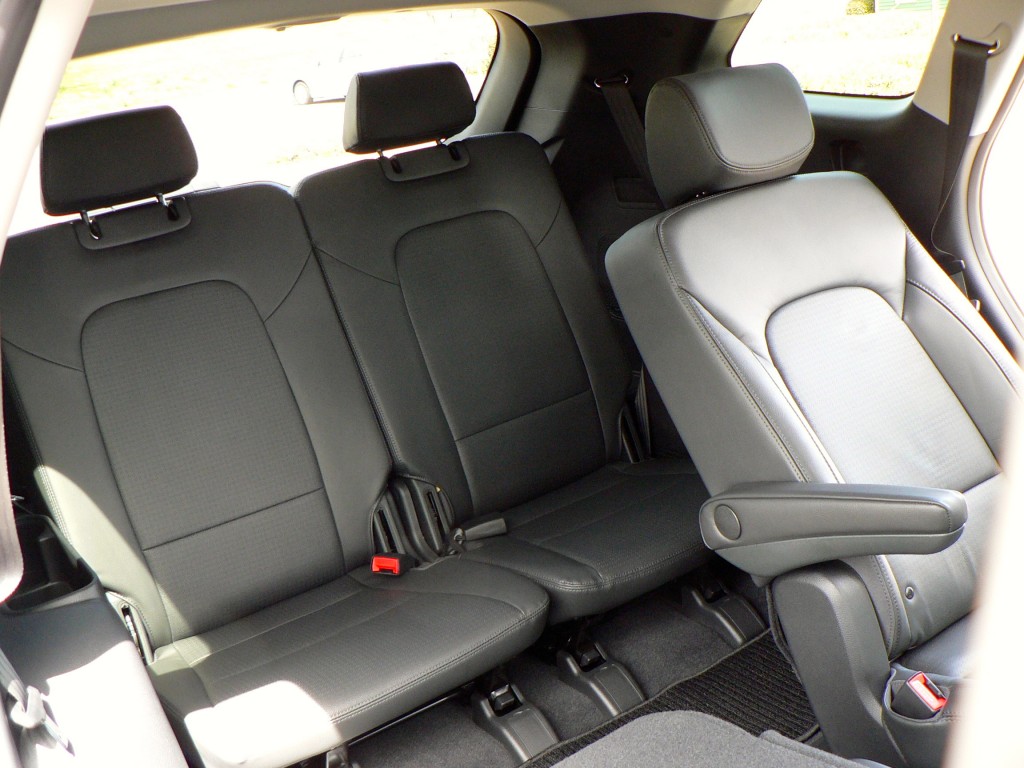
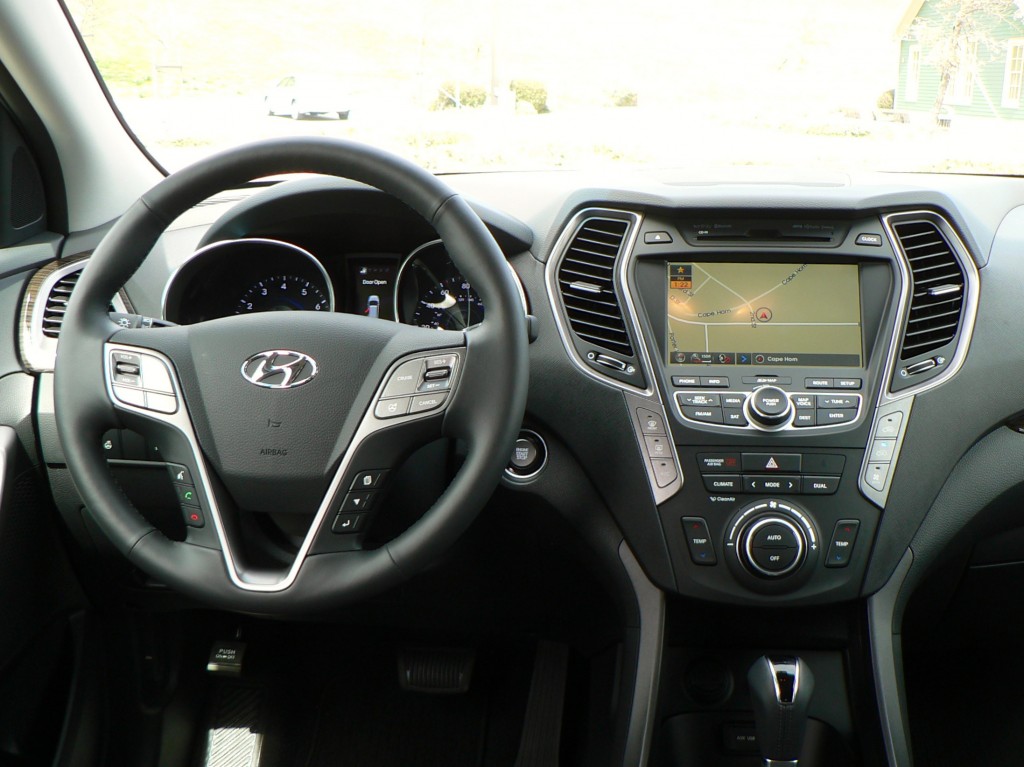
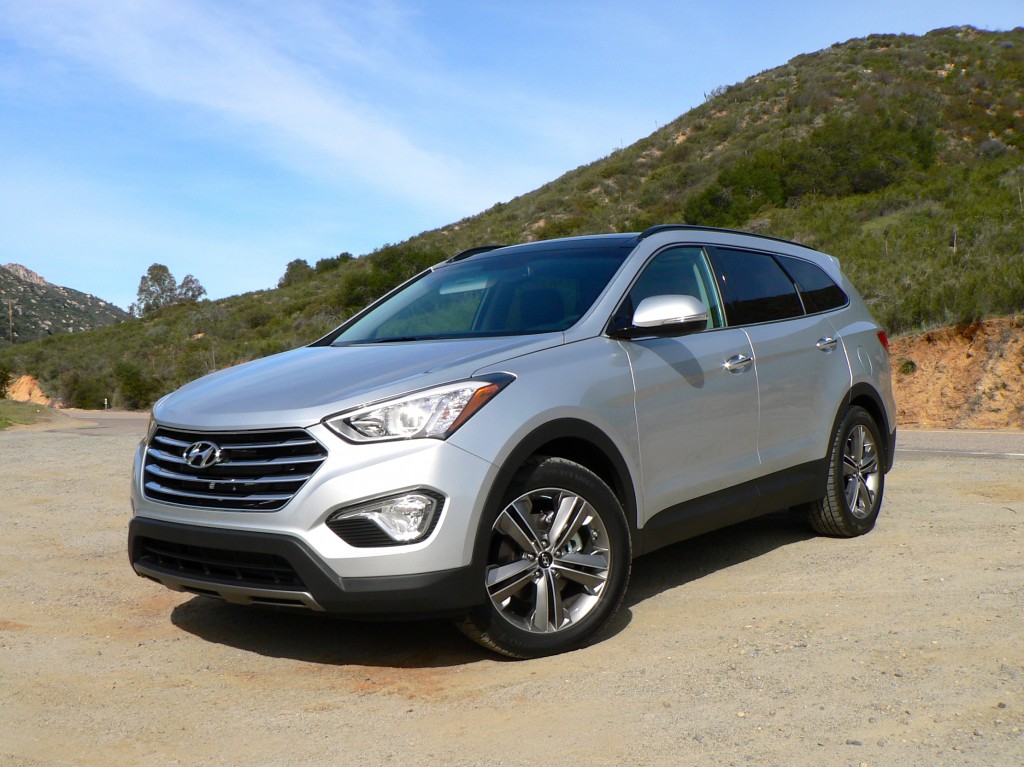
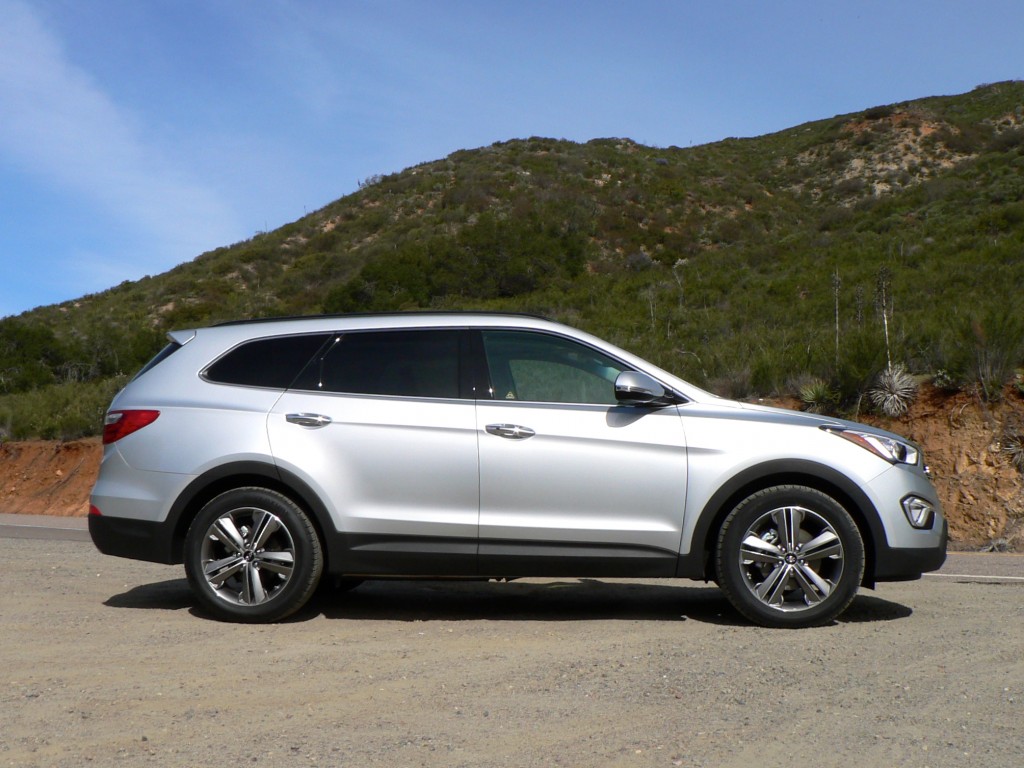
![[del.icio.us]](https://www.straight-six.com/wp-content/plugins/bookmarkify/delicious.png)
![[Digg]](https://www.straight-six.com/wp-content/plugins/bookmarkify/digg.png)
![[Facebook]](https://www.straight-six.com/wp-content/plugins/bookmarkify/facebook.png)
![[Google]](https://www.straight-six.com/wp-content/plugins/bookmarkify/google.png)
![[Reddit]](https://www.straight-six.com/wp-content/plugins/bookmarkify/reddit.png)
![[StumbleUpon]](https://www.straight-six.com/wp-content/plugins/bookmarkify/stumbleupon.png)
![[Twitter]](https://www.straight-six.com/wp-content/plugins/bookmarkify/twitter.png)
![[Email]](https://www.straight-six.com/wp-content/plugins/bookmarkify/email.png)